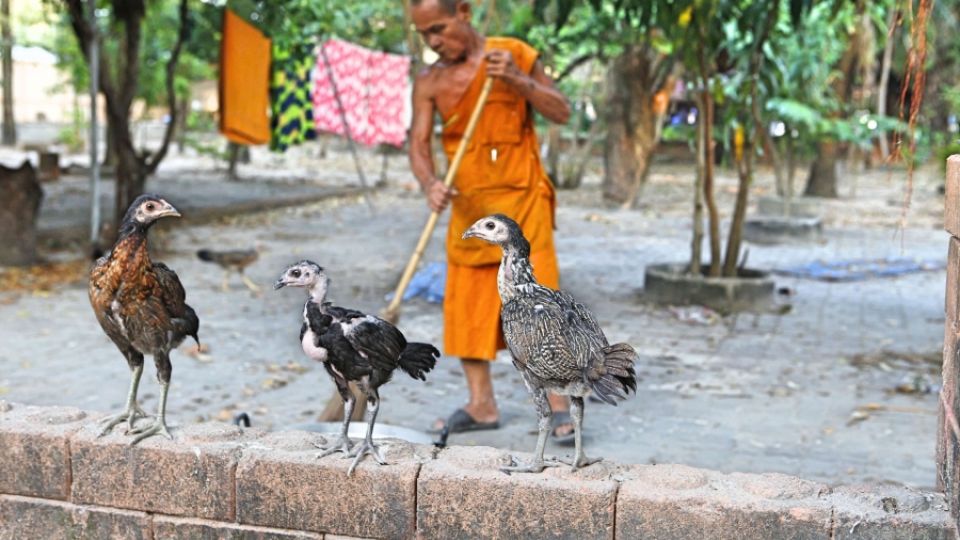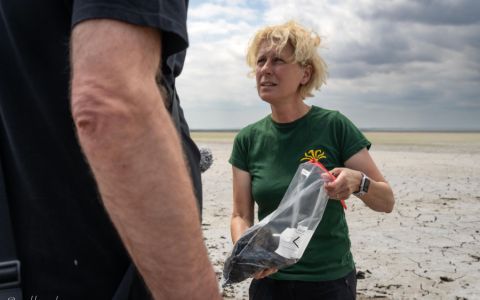Investigations proved toxic contamination in pollution hotspots in Thailand. It is caused, in particular, by dioxins and other persistent organic pollutants (POPs). High concentrations of POPs were measured in soil samples, but they were most frequently found in free range chicken eggs.
The two newly published studies, under a project funded by the European Union (EU) confirmed serious environmental pollution in Samut Sakhon, an area with a high concentration of metallurgical plants and small artisanal recycling facilities. Huge concentrations of dioxins, substances endangering human health even in trace concentrations, were also measured in free range chicken eggs samples.
The recently released studies 'POPs at four Thai pollutions hot-spots: Map Ta Phut, Samut Sakhon, Tha Tum and Khon Kaen' and 'Chicken eggs as an indicator of POPs pollution in Thailand' were conducted by two-nongovernmental organisations, EARTH and Arnika, as part of the 'Increasing Transparency in Industrial Pollution Management through Citizen Science' project funded by the European Union (EU) and co-funded by the Ministry of Foreign Affairs of the Czech Republic.
“In the studies presented today, we focused on persistent organic pollutants, such as, for example, dioxins, hexachlorobenzene, and polychlorinated biphenyls,” said Penchom Saetang, the EARTH Director, when commenting on the results. “These chemicals are regulated by the Stockholm Convention, ratified by Thailand in 2005, and our results should facilitate steps for reducing environmental contamination by these toxic substances. Because of that, we will deliver the results to Thai authorities,” said Saetang.
The purpose of the joint investigations between Arnika and EARTH is to obtain new information on the localities inhabited by communities which are potentially endangered by toxic substances. The new studies should help to map problems in communities living in the neighbourhood of industrial plants. These studies will serve as a basis for proposing solutions for the situation in areas with the highest environmental burden.
Organic and inorganic samples such as fish, mollusc, chicken eggs, soil, and ash were collected from the areas for inspections in 2016. Additional samples were also taken between 2015 and 2017. In additions, there were samples taken at Koh Samui and Saraburi
“People in Samut Sakhon need help because they live in the near neighbourhood of the polluting plants. This dangerous relation was confirmed by long-term investigations of children's health in the local community,” Arnika's chairman, Jindrich Petrlik, commented on the real impact of the studies.
Toxic chemicals out of the focus of interest
In the past, physicians have focused in particular, on monitoring levels of lead in blood in the area. “The results we published today show that dioxins, produced as by-products during waste burning and in metallurgical plants, may be a problem there, too. Because of that, it is necessary to prepare a plan for reduction of their emissions, particularly in this locality,” Petrlik said when outlining necessary future steps.
In addition to dioxins, polycyclic aromatic hydrocarbons also present problems in Samut Sakhon, as well as Khon Kaen. “In some samples, we simultaneously measured higher levels of brominated flame retardants that are released from old electronic equipment and/or may be released from industrial plants using them. Their higher concentrations were found not only in Samut Sakhon, but also in Map Ta Phut,” added Akarapon Teebthaisong, EARTH's expert on toxic substances.
The study focusing on hazardous chemicals in chicken eggs also recommended more careful handling of toxic fly ash from power plants. According to the experts, the fly ash should definitely not be used for soil enrichment, as is done in some places. In this way, toxic chemicals may subsequently enter chicken bodies and, through them, the food consumed by the Thai people.
Thai limits for foodstuffs were exceeded in the case of eggs, namely concerning hexachlorocyclohexane and hexachlorobenzene. Both these substances had been used as pesticides especially during the Thai agricultural expansion in the 1950's and 1960's. However, hexachlorobenzene, found in the highest concentrations, is also formed as an unintentional by-product of combustion processes and in the chemical industry in similar process to the above-mentioned dioxins.
“However, we have good news, too. We found that environmental contamination by polychlorinated biphenyls (PCBs), which had been used mainly in transformers in the past, is lower in Thailand than in other countries, for example in Kazakhstan,” said Petrlik with delight.
In addition, the analysis proved generally low concentrations of the investigated hazardous substances in fish which account for a large portion of the diet of locals.
Photos from the sampling are available here
Remarks for editors:
1/ Persistent organic pollutants (POPs) are industrially synthesized organic chemicals or unintentional products of chemical and combustion processes that persist over a long time in the environment. Many POPs were originally developed and synthesized for use during the 1930–40s. By the early 1970s concerns over environmental persistence and adverse effects on humans culminated in restricting POPs use in many countries. Subsequent restrictions and bans became worldwide by the late 1990s and early 2000s. POPs bioaccumulate are harm human health and living ecosystems in many ways. They can be dangerous in very low concentrations in the environment.
2/ Pollution monitoring studies in Thailand were prepared and published as a part of the project “Increasing Transparency in Industrial Pollution Management through Citizen Science” funded by the European Union (EU) and co-funded by the Ministry of Foreign Affairs of the Czech Republic within the Framework of the Transition Promotion Programme – a financial assistance programme supporting democracy and human rights using the Czech Republic’s experience with social transition and democratization.
3/ Arnika is a Prague-based Czech non-governmental organization focused on nature conservation, toxics and waste, and public participation in decision making on environmental issues. Because the environment does not respect borders, we cooperate with many partners all around the globe. Ecological Alert and Recovery - Thailand (EARTH) is an independent non-governmental organization striving for social and environmental sustainability and justice in Thai society. EARTH serves as a watchdog monitoring the Thai government’s industrialization policy, industrial pollution and unsustainable consumption patterns. EARTH also promotes climate justice, good governance and accountability of governmental and international agencies. EARTH focuses on the impacts of hazardous substances on ecosystems, local communities and workers’ health.
4/ Quoted reports:
- Persistent Organic Pollutants in Four Thai Hotspot Areas: Map Ta Phut, Samut Sakhon, Tha Tum, and Khon Kaen (download full text);
- Chicken Eggs as an Indicator of POPs Pollution in Thailand (download full text).
| Arnika – Toxics and Waste Programme Delnicka 13, CZ-170 00, Prague 7, Czech Republic tel. +420774406825; email: This email address is being protected from spambots. You need JavaScript enabled to view it.; www.english.arnika.org |
Ecological Alert and Recovery - Thailand (EARTH) 211/2 Ngamwongwan Rd., Soi 31 Bangkhen, Muang Nonthaburi 11000, Thailand tel: +6629525061, fax: +6629525062; www.earththailand.org |
![]()







